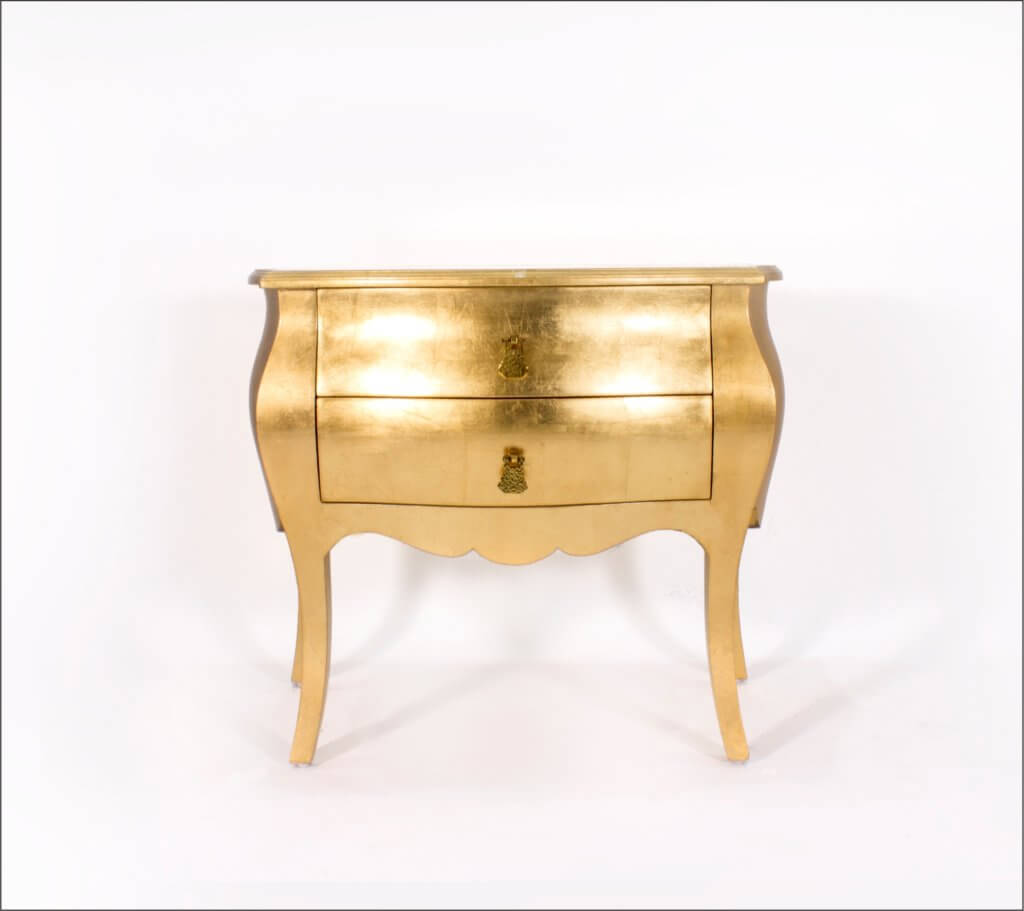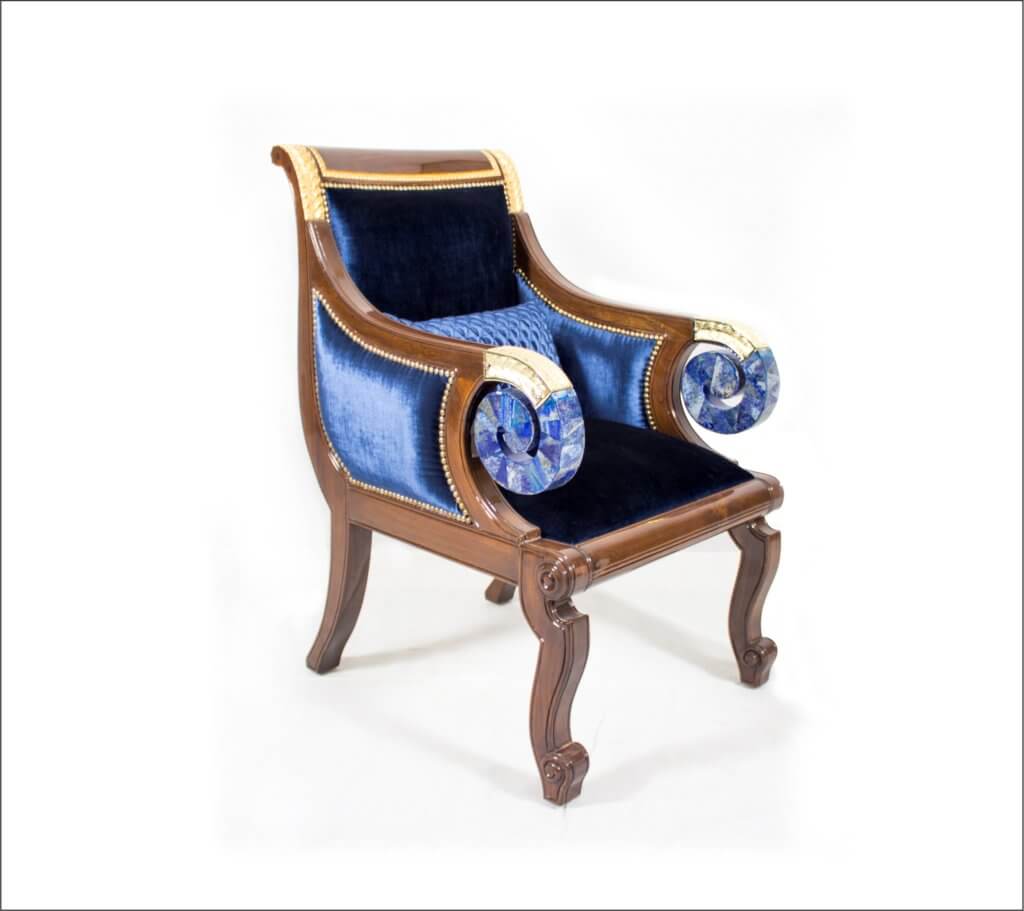Born largely in Rome, Neoclassicism in its root essence is a revival of the numerous classical styles and spirit of the past eras. As the norm of minimalism came to the minds of designers in the post Rococo era, also called the enlightenment era, the focus shifted towards curtailing ornamentation and the predominant material overkill. Traditional elements like curves and heavy articulation were traded in for lighter designs that draw their inspiration from classical elements and blends them with the usage of lesser details so that the beauty and texture of the original material can shine.
 Furniture design, like the other realms of design, had humble beginnings that were initiated on a very utilitarian ground. Ornamented furniture was a luxury only the rich and powerful could afford. Gradually, a transformation of trends and ease of material availability led to furniture design transcending to the mainstream. Similar to architecture, the industrial revolution and mass production of modern materials brought in a humongous shift towards minimalism in furniture design. As history is bound to repeat itself, luxury furniture design has also seen a revival of the classical style of royal furniture and has effectively picked up elements from it. From colour to proportions, from minute features to major ones, contemporary luxury furniture now derives inspiration from the classics and has become an amalgamation of elements from the modern era as well as the antiquities. One of the pioneers of this trend of culminated designs is Maison Du Luxe, a company that saw its inception in 1983 and has since been a headliner in bespoke luxury furniture design and turnkey interior design solutions. Spearheaded by Mr. Gobind Kapur, the mission of the company remains quality over quantity to achieve excellence. Putting this thought into practice, they constantly explore new ideas, latest technologies, innovation and sustainable techniques.
Furniture design, like the other realms of design, had humble beginnings that were initiated on a very utilitarian ground. Ornamented furniture was a luxury only the rich and powerful could afford. Gradually, a transformation of trends and ease of material availability led to furniture design transcending to the mainstream. Similar to architecture, the industrial revolution and mass production of modern materials brought in a humongous shift towards minimalism in furniture design. As history is bound to repeat itself, luxury furniture design has also seen a revival of the classical style of royal furniture and has effectively picked up elements from it. From colour to proportions, from minute features to major ones, contemporary luxury furniture now derives inspiration from the classics and has become an amalgamation of elements from the modern era as well as the antiquities. One of the pioneers of this trend of culminated designs is Maison Du Luxe, a company that saw its inception in 1983 and has since been a headliner in bespoke luxury furniture design and turnkey interior design solutions. Spearheaded by Mr. Gobind Kapur, the mission of the company remains quality over quantity to achieve excellence. Putting this thought into practice, they constantly explore new ideas, latest technologies, innovation and sustainable techniques.
 Neoclassicism in furniture saw a plethora of sub genres depending on the country of origin and the factor of local sourcing of materials. For instance, French neoclassical furniture tends to be linear in geometry and lacks curves. This French transitional style was inspired by animals like serpentine shapes that gradually straightened and cabriole legs evolved into turned or tapered legs. The backs of the chairs were rectangular or oval with turned legs, often fluted in reference to classical architectural columns. Later the empire style was developed based on the wishes of Napoleon which also served as a major influence throughout Europe and Americas. With the advent of colonialism in the Indian subcontinent, neoclassicism took its roots in the countries. The abundant availability of wood and brass paired with immense wealth among royal families, neoclassic furniture replaced traditional Indian furniture to some extent. A heavy influence can thus be seen in post colonial buildings and furniture. Maison Du Luxe effectively picked up the style and perfected it by integrating Indian and neoclassical furniture to create marvellous pieces through decades.
Neoclassicism in furniture saw a plethora of sub genres depending on the country of origin and the factor of local sourcing of materials. For instance, French neoclassical furniture tends to be linear in geometry and lacks curves. This French transitional style was inspired by animals like serpentine shapes that gradually straightened and cabriole legs evolved into turned or tapered legs. The backs of the chairs were rectangular or oval with turned legs, often fluted in reference to classical architectural columns. Later the empire style was developed based on the wishes of Napoleon which also served as a major influence throughout Europe and Americas. With the advent of colonialism in the Indian subcontinent, neoclassicism took its roots in the countries. The abundant availability of wood and brass paired with immense wealth among royal families, neoclassic furniture replaced traditional Indian furniture to some extent. A heavy influence can thus be seen in post colonial buildings and furniture. Maison Du Luxe effectively picked up the style and perfected it by integrating Indian and neoclassical furniture to create marvellous pieces through decades.
Modern day neoclassical inspired furniture perfectly integrates cutting edge technology and avant-garde designs of the past. Great exemplars of such a transitional design are the Nicole Chest and Emporia Armchair by Maison Du Luxe. Crafted in a rich and royal golden colour, the Nicole Chest showcases a classical and evergreen design that adds panache to any space that it occupies. Apart from the exterior design and look, this chest is fitted with the best of the newly developed fixtures for superior quality of use and long range durability. Similarly, the remarkable Emporia Armchair is a brilliantly designed chair that features classical elements and materials like blue stone inlays, velvet and gold detailing. The design of the chair itself is heavily inspired by chairs that seated nobles and princes in royal courts. Crafted with premium quality teak, both these furniture pieces are definitive representations of the neoclassical inspiration in luxury furniture and well explains the trend of transitional furniture which is something that Maison Du Luxe has developed a forte in.
Neoclassicism in furniture has actually given birth to an entire breed of design which sits between the modern and classic, and is referred to as transitional design. Neither entirely modern nor fully traditional, it aims to blend elements of multiple styles from different eras. It often includes visual references to classical Greek and Italian forms and other non-western styles. Since, these styles are world renowned and highly revered, Maison Du Luxe has been really facilitative to the requirements of the users for decades by serving them with premium quality products.











